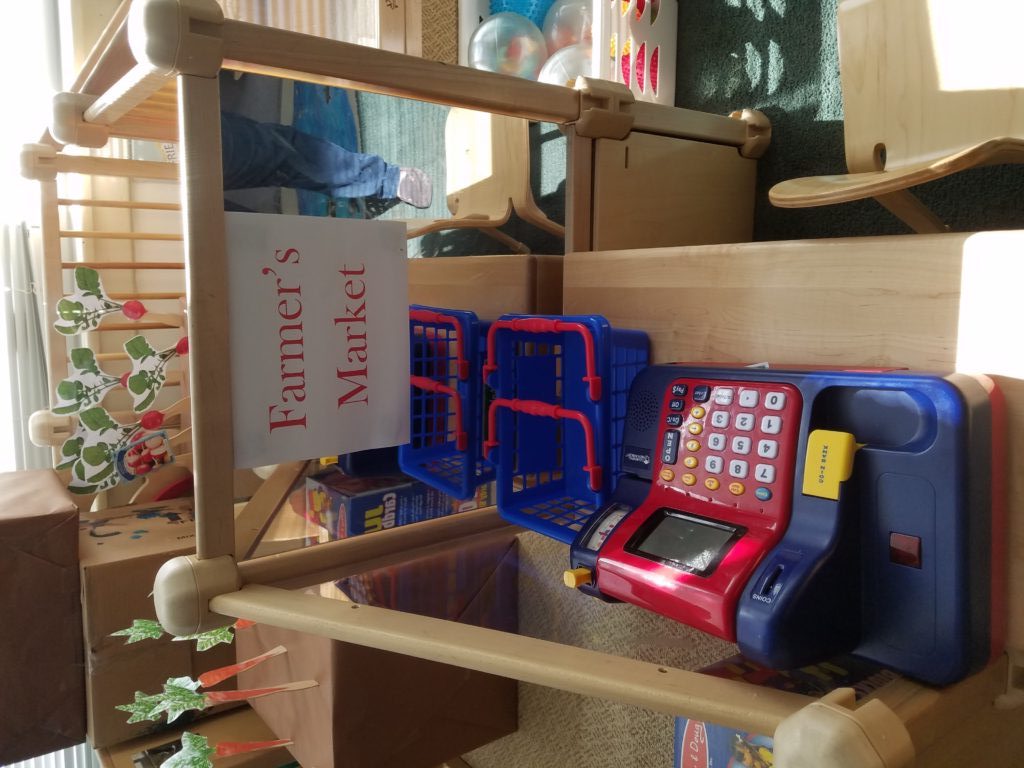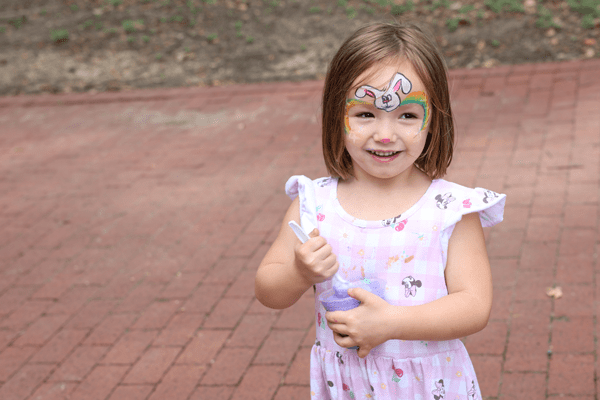The teaching approach in one of Vogel’s Toddler classrooms could best be described as “immersive.” When the children were learning about doctors, their teachers, Ms. Ballard and Ms. Daniels, helped them to create an in-class clinic, complete with a waiting room, an exam table, an X-ray display and medical supplies.
 So it’s no surprise that, when the time came to study how food is grown, the teachers and children transformed part of their room into a farm and a farmer’s market. Colorful carrots, lettuce and beets sprout from the ground; chickens lay eggs in nests and ducks paddle in a pond. Bright-pink pigs root for corn in a trough, and a big, spotted cow watches over the barnyard.
So it’s no surprise that, when the time came to study how food is grown, the teachers and children transformed part of their room into a farm and a farmer’s market. Colorful carrots, lettuce and beets sprout from the ground; chickens lay eggs in nests and ducks paddle in a pond. Bright-pink pigs root for corn in a trough, and a big, spotted cow watches over the barnyard.
For young children, play time IS learning time. But all kinds of play are not equal. For children to get the most out of their play time, teachers and parents must guide them toward increasingly complex concepts and interactions.
A 2012 article from the NAEYC publication Young Children emphasizes the importance of adult support in optimizing play time, stating that, “Teaching children to play has to be as intentional and systematic as teaching literacy or math.”
Our Vogel teachers certainly embrace this approach. When the toddlers play in their make-believe farm, they not only learn about growing food and raising animals; they also exercise their imaginations and improve their verbal, math and social/emotional skills. Given that children who have experienced trauma can lag behind their peers in these areas, it is particularly critical that we provide opportunities for our kids to build on these skills.
Applying best practices in early childhood education is just one of the many ways that Vogel’s teachers and staff help homeless children to learn, grow and thrive despite their circumstances.




